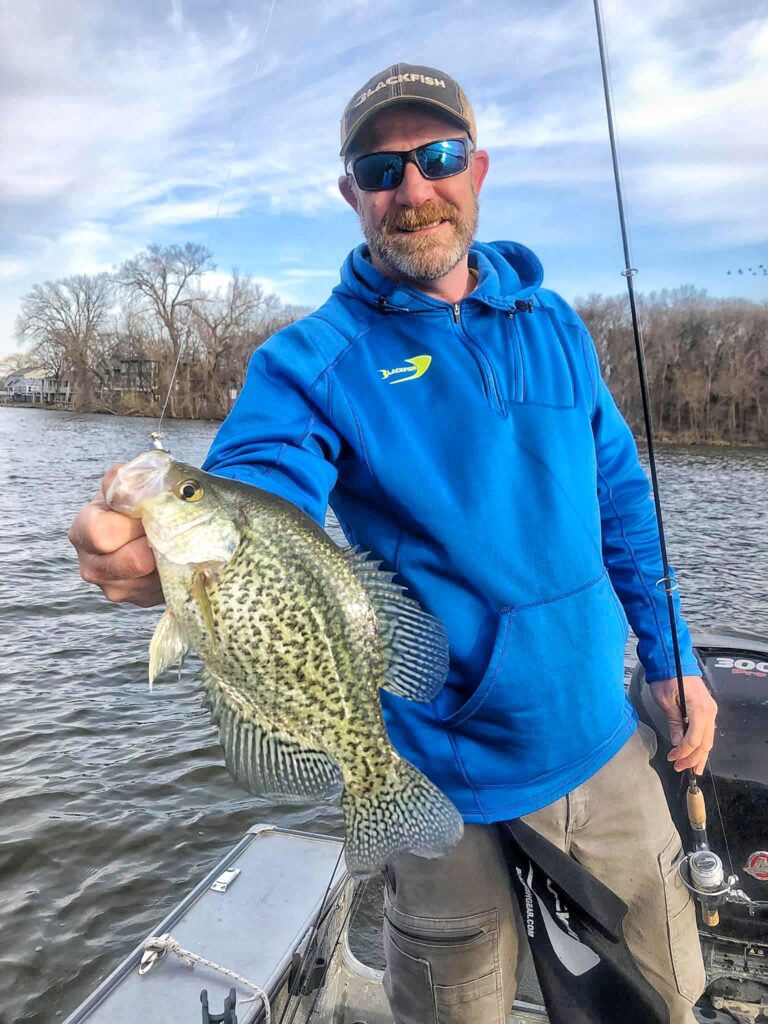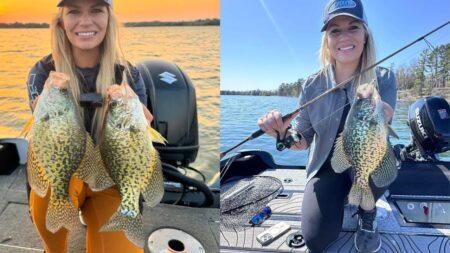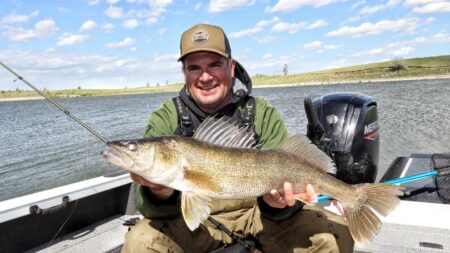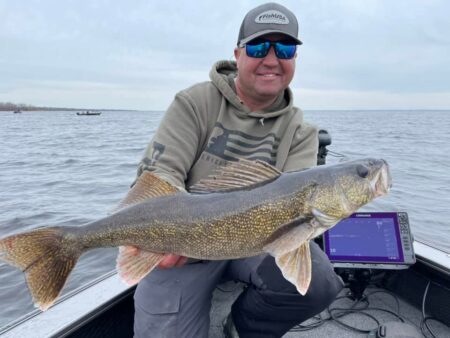Kevan Paul has guided across northern Iowa for several years and operates Clear Lake Bait and Tackle in Clear Lake, Iowa. Kevan spends a tremendous amount of time targeting crappie on Clear Lake but many of Kevan’s observations can be applied to other shallow dish bowl lakes, especially in northern Iowa.
Clear Lake is a typical glacial lake that is predominantly shallow without a lot of structure. During the summer, Paul often finds crappie in or near the deeper basin but some of these locations are still less than fifteen feet of water. The Iowa DNR planted artificial weed structure in different areas that are excellent locations to start looking for summer crappie because this artificial structure was typically placed in the basin. Also look for any type of rock or structure close to the basin or in the basin for midsummer crappie.
“In the past few weeks however, water temperatures have dropped over ten degrees, so we are seeing a big push of crappie up into shallower water,” explains Kevan. The weed growth on Clear Lake is predominantly shallow, stopping at six to eight feet of water most years. When cooling temperatures in fall trigger crappie to move, there are a couple of key locations according to Kevan that make some weeds much better… docks and rocks. Find rock that has good weed growth near or mixed in and the rock/ weed combination is often special. Docks will also offer additional structure that will hold a lot of fish when fish move shallow.
“Right now, we are catching a lot of black crappies in four to six feet of water but what is interesting is that we still find white crappie over the basin locations that held fish through the summer. The white crappie just seem to occupy deeper water than the blacks throughout the year,” explains Kevan.
Every lake has its own personality and Clear Lake in particular just sets up for shallow patterns and these shallow patterns that emerge near the end of summer and early fall will often hold until ice up. These fish at early ice are also notorious for being in extremely shallow weeds or pencil reeds.
For finding fish, Kevan does rely on Live Scope forward facing sonar but believes the greatest asset of forward-facing sonar is simply finding fish. “One you find fish like crappie, I sometimes think we are just better off focusing on our presentation and watching the rod tip versus trying to find your jig on a screen,” explains Kevan.

For simply catching fish, a pink jig tipped with a crappie minnow is confidence, but Kevan will also substitute minnows for soft plastics when on a good bite. Depending on the conditions, 1/16th or 1/32nd ounce jigs work well when targeting crappie in less than ten feet of water. The shallow weed fishing strategy is short casts with jigs and counting down the jig to touch different parts of the water column. The tactic is simply swimming or sweeping the jig with the rod tip. When Kevan is instructing his guide clients, he teaches them to keep the rod tip high in the air and pull the rod forward with the rod versus swimming with the reel. This keeps the rod in a better position for setting the hook and makes the presentation more sensitive as there are times when the line will simply jump from a bite. Halfway down in the water column is a good starting point but you can adjust how high or low you fish through experimentation and from what you see with forward facing sonar.




